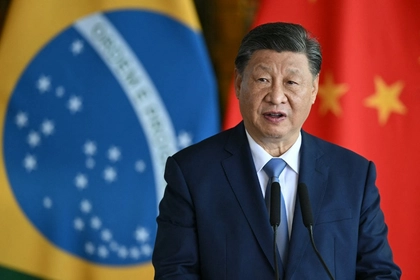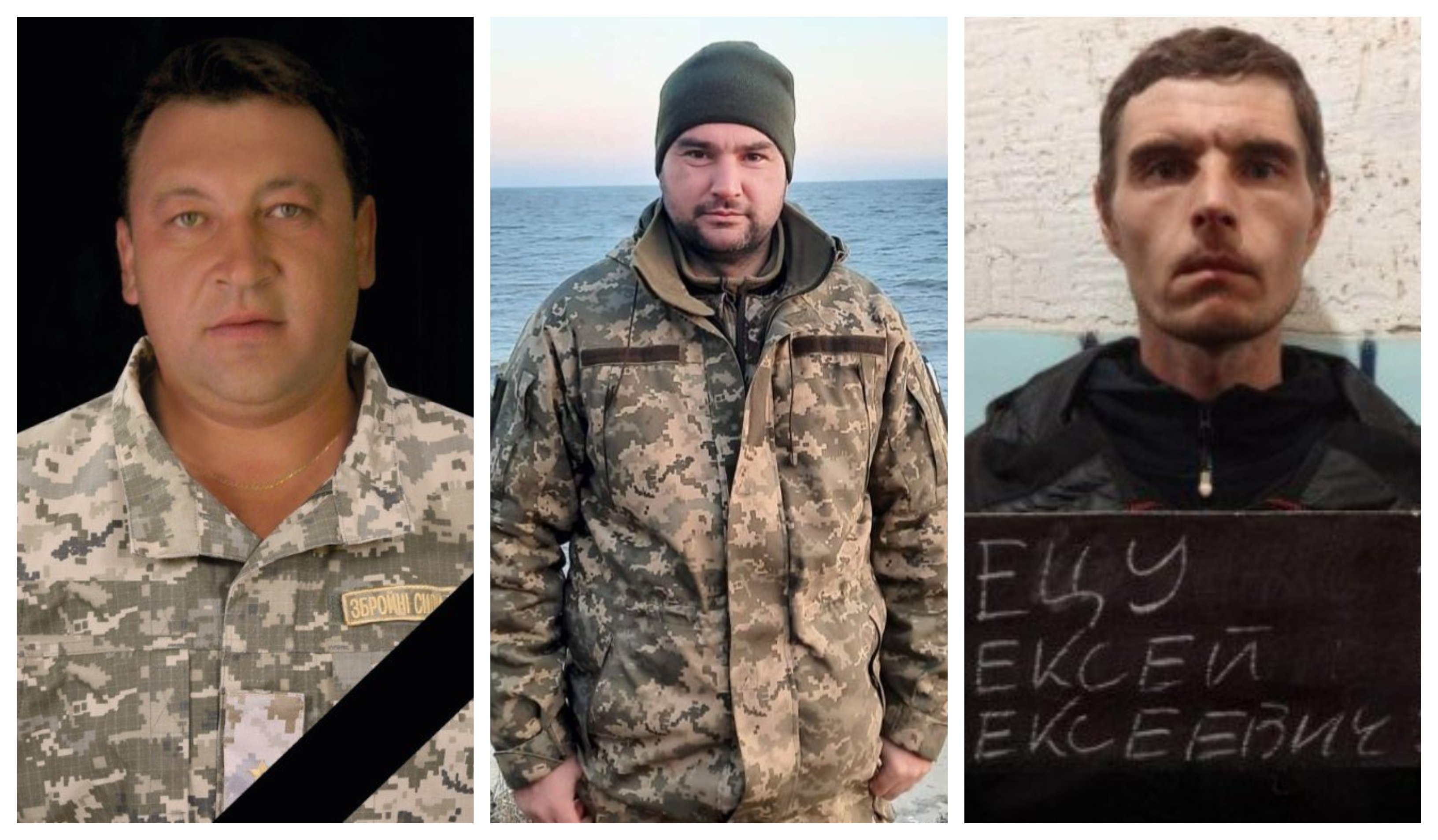Like many other prisoner camps, this center is also now known for its extremely inhumane treatment of Ukrainian POWs – including Ukrainian soldier Oleksandr Hrytsiuk, whose body arrived home in skin and bones, with the official cause of death simply listed as “tuberculosis” – a diagnosis signed off by Russian authorities and, according to the deceased’s wife, accepted by the Ukrainian side.
As Ukrainian investigative outlet Texty reported, Hrytsiuk’s case is not isolated, and the abhorrent treatment of Ukrainian POWs is a war crime happening across Russia.
JOIN US ON TELEGRAM
Follow our coverage of the war on the @Kyivpost_official.
Texty published three stories of POWs detained in the Vyazemskoye Detention Center-2 – now run by prison staff alongside local detainees – which highlighted both the Russian cruelties and how bureaucracy in Ukraine might have hindered the pursuit of justice for those alive to tell the tales.
Oleksandr Hrytsiuk
Hrytsiuk came from Kivertsi in the Volyn region, in western Ukraine. He was captured near Novobakhmutivka in the Donetsk region in April 2022 and his body – unrecognizable with shrunken skin and bones – was returned to Ukraine in January this year, after more than a year in captivity.
He was a tall man of 180cm and in good physical health, his wife Oksana said, but the body she saw weighed 55kg – only a third compared to when she last saw him.
“What was left of him were just bones and skin. His head was all bruised, his nose was crooked, and his index fingers had no nails. Whether they were ripped out or smashed, I do not know. There were signs of torture all over his body,” she told Texty.

Xi Calls For ’More Voices’ to Work for Peace in Ukraine
Later, released POWs also told her how Hrytsiuk was tortured while in Russian captivity, where he was beaten brutally “because he was tall, stately, from western Ukraine, and didn’t want to speak Russian.”
“They called him a Banderite, saying all Banderites must be killed and cut to pieces [...] They were hardly fed. Once, there was some holiday, and dogs were running in the prison yard, so the guards collected leftover dog food, added dog hair to it, and gave it to them as food,” she said.
Before she went to identify the body, a representative from Ukraine’s commissioner for human rights informed her in December 2023 that it was possible to send things and a letter to Hrytsiuk, which she did.
However, Hrytsiuk likely died before the supposed correspondence proposed by Ukrainian officials, based on his death certificate and accounts from his fellow inmates.
Oksana also contested the stated cause of death.
“I don’t understand why our side essentially accepts the Russian position, attributing the causes of death simply to illness. Just looking at him, it is clear that he was tortured. There are only bones and skin. Given all this, we said we disagreed and wouldn’t accept such a death certificate,” she said.
“In Kivertsi, they wanted to install a memorial plaque and said, ‘We will write that your husband died in captivity.’ And I told them, ‘It's better not to put anything at all. My husband did not die, he was killed defending his homeland.’”
Vitalii Klochenko
Vitalii Klochenko came from Voznesensk in the Mykolaiv region. He served as a machine gunner with the 36th Marine Brigade and was captured in April 2022. His body was returned to Ukraine in April this year.
His wife, also called Oksana, said Klochenko contracted tuberculosis under Russian captivity – potentially a deliberate move by prison guards, and his fellow inmates later told her of the torture they endured.
“They were fed the same food given to pigs and only two spoonfuls. They were severely beaten. If someone fell and lost consciousness, they would place a shocker to their ear to revive them and then continue.
“How can one not get sick after such treatment? Moreover, the guys said that they could deliberately put a person with tuberculosis in the cell to infect others,” she told Texty.
She also complained of inadequate processes from the Ukrainian side when the body arrived, where she was only able to see it a month after it arrived – by then, part of it had also decomposed due to improper storage.
“The bodies were not in refrigerators, just lying in the morgue in the bags they were brought in. When we opened the bag, there was partially just mush. The smell was terrible.
“I found out that Vitalii’s body was returned to Ukraine on March 15, but I was informed only on April 17. However, his name was written on the body bag. I asked why they didn’t call the family immediately when the body arrived in Ukraine but waited for a month. They answered that many bodies had arrived.
“Once it was our turn, they informed us. But couldn’t they have stored the body properly?” she said.
Oleksii Kretsu
Oleksii Kretsu, also came from the Mykolaiv region, served as a border guard and was captured in the Luhansk region. He is now undergoing therapy for tuberculosis and hepatitis B contracted under Russian captivity.
He also told Texty about his experience under Russian capture and provided more information on the deaths of Hrytsiuk and Klochenko.
According to Kretsu, Hrytsiuk’s death was the first death he had witnessed at the site, and he likely died while in captivity at the detention center in December, not at the hospital as it was indicated.
“One of the convicts working in the housekeeping unit said to the guard: ‘Boss, I'm afraid to go in there.’ To which he replied: ‘You're afraid of the living, nothing to fear from the dead,’” recalled Kretsu.
“About 5-6 hours before that, we watched one of the guards approach the solitary cell where Hrytsiuk was held, worriedly saying they would bring him proper food. From the tone, it was clear that Hrytsiuk was already in a critical condition.
“In the morning, we heard the medic say to write down the surname Hrytsiuk or Hrytsiv,” he said.
As for Klochenko, Kretsu called him a “man with character,” where the Russians “killed him physically” because they could not break him mentally.
“I spent time with him in the cell from around, let me say precisely, from April 2022 to January 27, 2023. He was a healthy guy, physically developed, aggressive towards everything, with his unyielding point of view.
“About three months later, when we were transferred to the first floor to the coldest cell, like tuberculosis patients, we heard how he was being led to the bathhouse, and he was limping. They constantly told him: ‘Klochenko, hurry up, limp.’ I understand this was the result of interrogations,” he said.
Kretsu also detailed the forms of torture he endured and witnessed under Russian captivity, including but not limited to starvation, sleep deprivation, year-long solitary confinement and collective punishment.
Texty’s full investigation is available in both English and Ukrainian.
You can also highlight the text and press Ctrl + Enter







